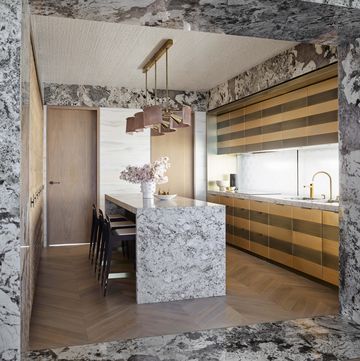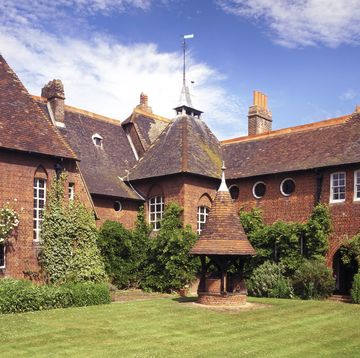When it comes to ticking off London’s most notable design districts, Battersea Power Station might not immediately spring to mind. But from this Friday, expect that to change – for good. Once responsible for supplying a fifth of London’s electricity (before it was decommissioned in 1983) this historic, Grade II-listed building on the south side of the River Thames has undergone a total renovation.
The previously derelict shell has now been transformed into a complex of shops, apartments, restaurants and hotels that pays tribute to the power station’s design history, while bringing it into modern day usage.
‘It has been a privilege to restore this iconic building, not only saving and celebrating the original features but creating contemporary interventions that will bring the structure alive again,’ says Sebastien Ricard, director at Wilkinson Eyre, who has led the architectural refurbishment.
What's everyone reading?
Think exposed brickwork and large bowstring trusses, counterbalanced by a clear, top-lit void, balustraded galleries, restored skylights and even a unique glass chimney lift, which will take visitors over 100 metres above ground for a panoramic view of the city.
There have also been several additions to the original structure. ‘Electric Boulevard’, a new pedestrianised high street for the capital that runs from the south of the power station, takes centre stage and will offer a mix of offices, shops, bars and restaurants, plus a slick outpost of design-led hotel, Art’otel – this time masterminded by Jaime Hayon.
Several renowned industry names have lent their expertise, designing and creating new buildings for the site. To the east of ‘Electric Boulevard’ lies ‘Prospect Place’, a collection of swish apartments with a rippled, white façade designed by Frank Gehry – the first housing project realised by the architect in the UK, which also comprises some shops and a private garden. To the west of 'Electric Boulevard' is ‘Battersea Roof Gardens', designed by Foster + Partners: one of the largest roof gardens in London, the development also includes more than 400 apartments.
The project has seen a real dedication to honouring the power station’s heritage. All four of the signature chimneys have been completely rebuilt using the same methods with which they were first constructed, while nearly two million bricks for the renovation have been hand-thrown by the original brickmakers who supplied the materials during the initial construction in the early 20th century.
‘The new interventions are sympathetic with carefully chosen palettes of materials, textures and colours,’ says Ricard. ‘Where possible, we have allowed the original fabric of the building to tell its own story.’
It may nod to its architectural roots, but the new Battersea Power Station is undoubtedly forward-facing in its design. A host of international brands are busily setting up shop in the old Turbine Halls A and B, both of which have been restored to their original Art-Deco and Brutalist splendour respectively.
The old control rooms – with their switchboards and synchroscopes still on show – have been turned into bars and events areas. ‘These spaces are truly unique souvenirs of Britain’s industrial heritage, which allow you to take a step back in time,’ says Simon Murphy, CEO at Battersea Power Station Development Company.
It’s a move that’s set to put Battersea on the map again, ready to power London – or its cultural side, at least – once more. batterseapowerstation.co.uk















